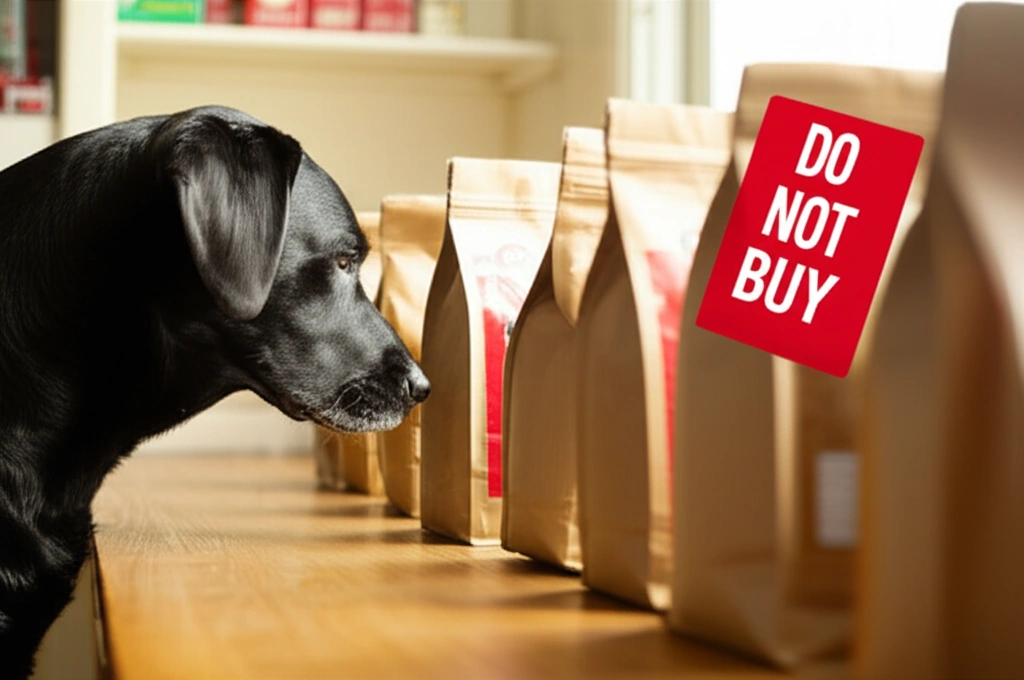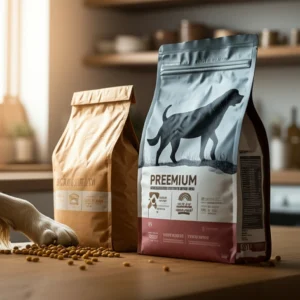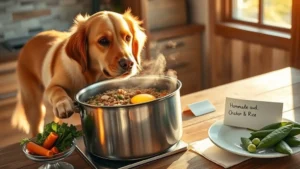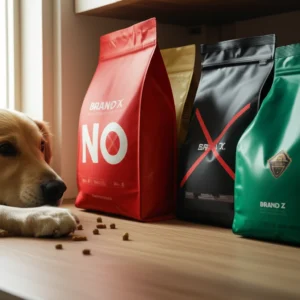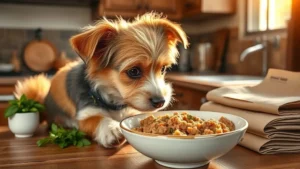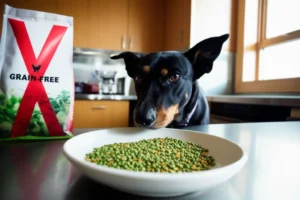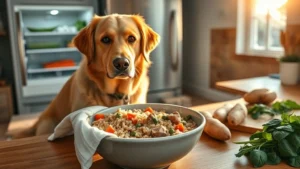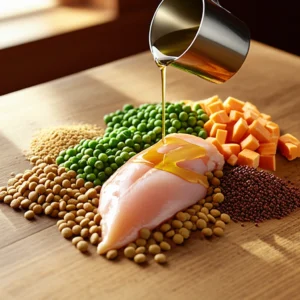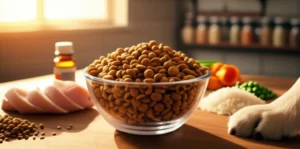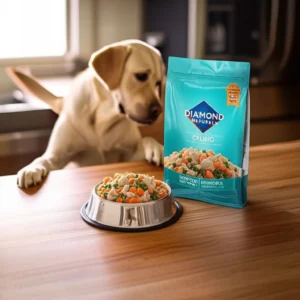Why Some Dog Foods Are Risky
Let’s get straight to it—because your pup’s health isn’t something you want to gamble with. If you’ve ever felt lost in the sea of options at the pet store, staring at all those bright bags and making deals with yourself (“Maybe this one is fine… it says ‘natural,’ right?”), you’re not alone. The reality is, not every brand on the shelf deserves your trust. Some dog food brands to avoid in USA have earned their spot on the notorious top 20 worst dog foods list for good reason: shoddy ingredients, questionable safety records, and surprise recalls that have pet owners everywhere double-checking what’s actually in their dog’s bowl[2][5].
You love your dog. You don’t want to wake up one morning and realize the shortcut you took with their food was more costly than you imagined. That twinge of uncertainty? I get it. That’s why we’re digging into the details together—so you know for sure which bites are best skipped.
How We Dug Up This List
Now, before we start trashing any brands (I mean, nobody wants to be that dog owner spreading rumors at the dog park), let’s talk honesty. This isn’t about drama; it’s about taking a careful, evidence-based look at what’s really in the bag.
I scoured FDA updates, peer-reviewed pet nutrition sites, big investigative reports (think late-night Reddit deep dives and reputable watchdog groups), and cherry-picked tips from real vets. Not to mention, I peeked at those viral TikToks—because honestly, sometimes whistleblowers hide in the most unexpected places. Here’s how I separated fact from noise:
- Checking ingredient quality and transparency
- Researching recent recalls and legal issues
- Weighing expert reviews—are pet nutritionists giving the thumbs-up or noping out?
- Looking for patterns: hidden fillers, artificial crap, or fancy labels that mean nothing
Major Red Flags On Dog Food Labels
How do you recognize a troublemaker disguised as a “premium” dinner? A few warning signs make my skin crawl:
- Unspecified meat ingredients: If it says “meat by-products” or “animal digest” with no source, beware. You deserve to know what you’re feeding your best friend[1][2][5].
- Artificial preservatives & colors: BHA, BHT, caramel color, Red #40, propylene glycol—great for shelf life, lousy for health.
- High “filler” content: Watch out for bags bulked with cheap grains or “pea” variants (pea protein, pea flour, pea starch, etc.). These can push meat out of the top spot and won’t keep your dog’s energy up for long walks.
- Strange chemical additives: Parabens, melamine, and even sometimes heavy metals? It’s more common than you think—just ask anyone who’s closely followed recent recalls[2].
One simple trick: Give the label a quick scan. If the first ingredient isn’t a specific, named animal protein (chicken, beef, lamb), that’s a red alert.
Why Are “Grain-Free” Diets On Avoid Lists?
Confession time: I was swept up in the grain-free dog food craze, too. It sounded healthy, even fancy—until the FDA started connecting some of those trendy grain-free dog food brands to a scary canine heart disease called DCM. Turns out, grain-free doesn’t always mean “risk-free.” According to the FDA, grain-free brands high in legumes, peas, and potatoes may be linked to DCM, so you’ll now see several of those brands on warning lists[2].
It’s not about being anti-grain. It’s about making sure your food choices aren’t unknowingly putting your pet at risk. There are best dog food brands with well-balanced grain-inclusive and grain-free options that carefully avoid the DCM controversy.
Some Brands To Think Twice About (And Why)
Okay, big breath—here’s some of what the research uncovered. These may show up time and again on the best and worst dog food brands lists, and there’s usually more than one reason behind it. This isn’t about dragging companies, but about plain honesty for your dog’s sake.
| Dog Food Brand | Biggest Concern(s) | Reason on “Avoid” Lists | Safer Alternatives |
|---|---|---|---|
| Sanyuan | Melamine contamination | Recall history, toxic additives | Check label, avoid low-cost imports[2] |
| Rongxi Enterprises (USA) | Melamine, kidney damage | Poor safety records[2] | Choose certified mainstream brands |
| Orijen (USA) | Heavy metal contamination | Reported by watchdog groups[2] | Speak with your vet; look for 3rd-party tested foods |
| Royal Canin | Parabens in packaging (controversial) | Scrutiny over chemical exposure[2] | royal canin dog food (for informed decision) |
| “Grain-Free” Labels With Peas/Potatoes | Linked to DCM, heart disease | FDA caution, incomplete nutrition[2] | Check recipes, consult vet, mix up protein sources |
| Filler-Heavy Supermarket Kibble | Cheap grains, artificial flavors | Poor protein, high in salt and sugar[1][5] | Look to best dry dog food brands |
I know, that’s a lot to process. Maybe you’re thinking, “Is it safe to ever switch brands at all?” The short answer is yes—as long as you take a slow, thoughtful approach to each transition and monitor how your pup’s doing.
What To Do If You See Red Flags
First things first: no shame if your bag is on this list. Big brands flood the shelves with clever marketing. If you spot a warning sign in your pantry, don’t panic. Dogs are resilient—as long as you act quickly and show some care, you’re already doing right by them.
- Stop serving the questionable brand immediately if your dog is showing weird symptoms: tummy troubles, lethargic afternoons, sudden hair loss, or worse. Always trust your gut!
- Keep the bag and jot down the batch number—this helps your vet and, if necessary, lets you file a consumer complaint.
- Visit or call your vet, especially if you notice scary symptoms or if your dog has special needs.
Switching foods? Do it gradually—mix old and new food over 7-10 days to avoid a messy “transition disaster.”
What Good Dog Food Really Looks Like
Searching for the best dog food brands? Once you know how to decode a label, you’re golden. Here’s what great dog food (dry or wet) has in common:
- An animal-based protein as the first ingredient (look for “chicken,” “beef,” and not “meat by-product”)
- Clear ingredient list—no mysterious “digests” or “flavors”
- No artificial sweeteners, colors, or preservatives
- Transparent sourcing—bonus points if they list where the meat, grains, or veggies come from
- Up-to-date nutritional adequacy statements; bonus for third-party testing or veterinary recommendation
Ready to upgrade? Curiosity sparked? Peek at these best and worst dog food brands for a comparison that’s actually helpful (not just hype).
How Vets See It: Signs & What To Watch For
You don’t have to panic every time your dog skips a meal, but risky foods can leave subtle clues over time. Look for:
- Sudden drop in energy or “I’d-rather-nap” attitude
- Noticeable weight loss, or—yikes—hair falling out in clumps
- Odd new habits, like refusing the once-loved kibble or drinking tons of water
- Sudden tummy trouble that doesn’t clear up quickly
If you catch more than one of these, call your vet. They’ll probably want to run a few tests (bloodwork, organ function, check for DCM if you’ve been on grain-free), and give you honest advice on what to do next. They’ve seen it all, and their only loyalty is to your dog’s well-being.
Switching Foods Without Upsetting Tummies
Change can be hard for anyone! The key to safe switching is to go slow. Here’s an easy schedule:
- Day 1-2: 75% old food, 25% new
- Day 3-4: 50/50 blend
- Day 5-6: 25% old, 75% new
- Day 7: All new food, watch for any digestive drama
If your dog starts looking queasy, slow it down or swap in some plain, boiled chicken for a few meals. And always, always have extra water available. GI upsets can happen to anyone—just like adjusting after a vacation buffet.
Stories From The Real World
Here’s where things get personal—because every bad bag hides a story. I once fed a trusted supermarket brand to my childhood lab because it was cheap and, well, the commercials looked honest enough. One summer, her coat lost its shine and she’d nap all day, which wasn’t like her at all. Turns out, the ingredients were mostly corn and “meat by-products”… and after switching to a reputable, protein-forward food, it was like someone flipped a switch: energy, glossy fur, that wagging tail back in business.
Another friend’s doodle who’d thrived on grain-free kibble suddenly started panting after play. The vet suspected diet was part of the problem, especially after the grain-free dog food brands to avoid headlines popped up. A cautious change and regular check-ins made all the difference.
If you’ve had a scare with your own four-legged family member, you know exactly how unnerving it feels. Share your story or reach out with questions—your experience matters, and might just help another worried dog parent.
Check And Compare: At-A-Glance Table
| Brand | Known Issues | Reason for Avoidance |
|---|---|---|
| Sanyuan, Rongxi | Melamine, safety recalls | High profile, toxic incidents[2] |
| Orijen | Heavy metal contamination | Reports from consumer groups[2] |
| Royal Canin | Parabens controversy | Ongoing scrutiny—royal canin dog food |
| Grain-free with legumes | DCM (heart risk) | Evidence from FDA studies[2] |
| Bargain brands | Fillers, preservatives | Poor protein, high carb/sugar |
Remember, this list isn’t absolute—recipes change, brands respond to pressure, and every dog is unique. Use this as a launchpad for your own safe choices.
How To Cross-Check Brand Claims
We’ve all seen influencer “top 10” lists or angry posts in pet groups. Take each with a pinch of salt. The best way forward? Double-check everything:
- Is there a recent recall? Look it up on the FDA’s official pet food recall page (always up to date, always worth a peek).
- Ingredient label confusing? Google unfamiliar terms—or ask your vet to translate the jargon.
- Found a brand that’s mostly “meh”? Compare it to trusted choices like the best dry dog food brands for a clear perspective.
The more you know, the better shielded your dog will be, and you’ll earn solid dog-parent bragging rights.
Wrapping Up: Let’s Keep Them Wagging
Here’s what it boils down to: Feeding your dog shouldn’t feel like a guessing game. Bad actors in the food aisle exist, but you’re armed with more clarity now than ever. Keep an eye on your labels, mix up your protein sources, and don’t hesitate to ask for expert advice. Your dog’s health is worth every extra minute spent in the pet food aisle—trust me.
Ready to ditch the guesswork and find something worth every scoop? Check out those best dog food brands or learn what you need about royal canin dog food to make an informed choice for your four-legged shadow.
Got a story or a question that’s been bugging you? Reach out! Your journey helps everyone, and together, we can keep all our dogs tail-wagging, happy, and safe.

